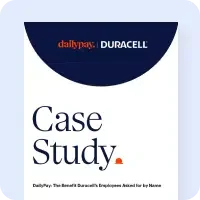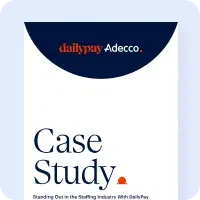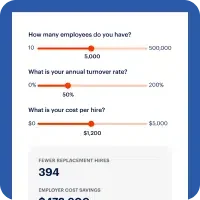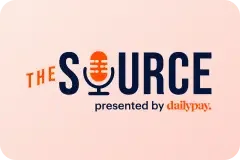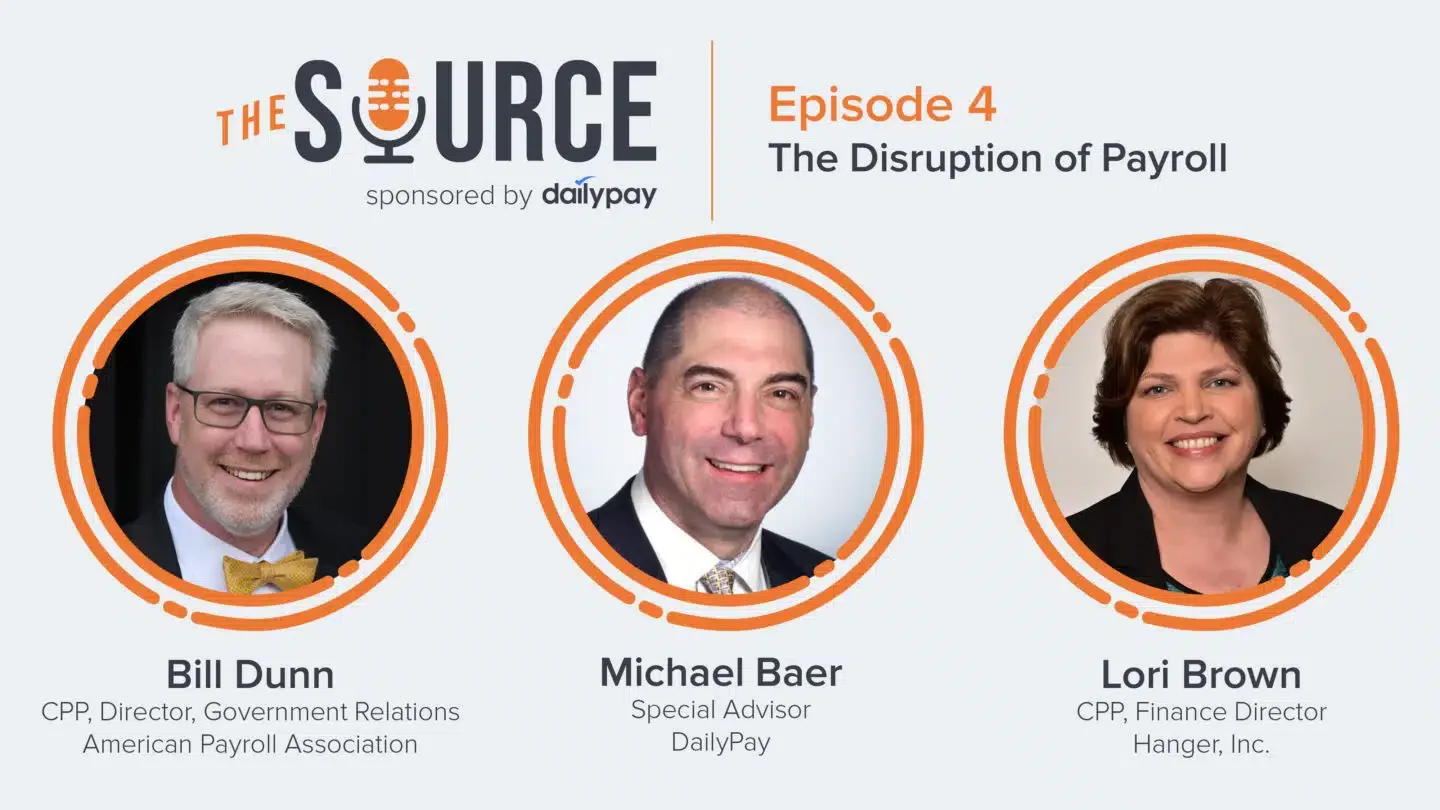Episode Description: Listen as host Michael Baer, CPP, talks with payroll leader Lori Brown, CPP, and APA’s Director of Government Relations, Bill Dunn, CPP, about the “third wave” of major disruptive change for payroll — access to pay daily. Why and how is this happening? What can payroll professionals do about this change? The speakers address the compliance and systems issues that payroll professionals have identified as potential barriers to adoption, and discuss the latest news in the daily pay space.
About Our Speakers

With more than 25 years of experience in payroll, including government contracting, payroll tax compliance and systems conversions, Lori Brown brings a broad range of experience to Hanger, Inc. where she oversees HR, HRIS and Payroll. She also teaches payroll courses and was the closing keynote speaker at the American Payroll Association’s Payroll Leaders Conference last November.

Bill Dunn advocates on behalf of American Payroll Association members and the payroll community by overseeing the APA’s Government Relations Task Force and facilitating engagement with federal, state, and local authorities to address issues relevant to the payroll profession. Bill has more than 25 years’ experience writing for, teaching, and advocating on behalf of payroll professionals.

Michael Baer is the host and executive producer of The Source podcast. Michael previously oversaw domestic and international payroll news and analysis at Bloomberg Tax, previously BNA.
In a career spanning three decades, Michael transformed the role of managing editor, becoming an information services leader who managed every aspect of world-class global products and platforms, while continuously increasing revenue and achieving market-best customer satisfaction. He directed a team of editors and writers who were charged with translating complicated tax and labor laws into English so non-lawyers could easily understand and apply them, and was integral in organizing and placing that content on easy-to-access web platforms, resulting in the highest net promoter scores the company had seen for any of their offerings.
Michael has been a frequent public speaker for conferences and webinars, and now is the host of The Source, sponsored by DailyPay. Michael joined the DailyPay team in 2019.
In this podcast you will learn about…
- Why it’s important for payroll professionals to understand the various on-demand pay options
- How some on-demand pay vendors create more exposure and liability for employers
- The amount of involvement needed for payroll systems and processes to make on-demand pay happen
Thanks for tuning in!
Podcast Transcript:
Speaker 1:
Welcome to The Source, your monthly resource for regulatory updates and issues in the on-demand pay industry. The Source is brought to you by DailyPay, the industry leading provider of the DailyPay benefit. This material is for general information only, and the views expressed herein reflect only the views of DailyPay. This program should be considered marketing material and should not be relied on for legal, tax, accounting or regulatory advice. And now let’s welcome our host, Michael Baer.
Michael Baer:
Hello everyone and welcome to The Source. The Source is sponsored by DailyPay and is your look into active and upcoming legislation, industry insights and news, and a chance to understand the complexities and questions surrounding issues in the early access to pay industry. Today we’re going to start with some new developments bubbling up as state legislatures meet during January, but the larger, more all-encompassing issue we will explore is the disruption of payroll that daily pay brings with it. Joining us is Lori Brown. She’s a certified payroll professional, who is the Finance Director of Payroll Operations with Hanger, Inc. And she’s calling in from Austin, Texas. And also joining us is Bill Dunn. He’s a CPP as well. He’s the Director of Government Relations with the American Payroll Association. He is calling in from Washington, DC. Lori and Bill, welcome to The Source.
Bill Dunn:
Thanks Mike. Happy to be here.
Lori Brown:
Thanks Mike. I’m excited to have this conversation with you both.
Michael Baer:
All right. Well, first let’s get into what has become a tradition here at The Source, today in legal history. We have these legal facts we like to talk about. And on this day, January 15th, Martin Luther King Jr. was born. The champion of civil rights actions and legislation, he would have turned 91 on this day. Another interesting legal fact we dug up that happened on this day, January 15 was according to the History Channel website, the 1777 Declaration of Independence by New Connecticut, which five months later became known as Vermont. This territory had been connected to New York. And according to the report on the History Channel website, a convention of future Vermonters assembled in Westminster and declared independence from both the Crown, Great Britain and the Colony of New York.
Michael Baer:
So that’s quite an interesting little twist that I wasn’t aware of before we did this research. And Lori and Bill, Martin Luther King Jr. Wow. Certainly he led a major movement throughout American society in the 1950s and 1960s advancing civil rights for millions and millions of disadvantaged Americans. But what a disruption that must have been during the Revolutionary War when New Connecticut declared its own independence, who saw that coming? And I have to say, well, who saw the effort to pay people daily coming? And we’ll discuss this after I go over some news in our area.
Michael Baer:
So for the news as state legislatures convene for their 2020 sessions and Congress reconvenes, there are several issues we’re following here at DailyPay. First on the payday loan operators, the drama is continuing as they seek to survive into this new year. Two sides, separate sides are trading off in efforts to both curb and or promote the practice of providing ultra high interest loans for short-term payday needs. Something that we at DailyPay are all about trying to eliminate.
Michael Baer:
On the federal level, there is bipartisan legislation that’s been introduced to limit interest on these loans, the 36%. it’s similar to a measure that passed in California last year, but the California measure actually sets that limit for loans between $2,500 and $10,000. And so most people using payday loans are not going to be taking out loans for $2,500. So the upshot there is that there’s still good business for payday lenders in California and federal legislation does not have a threshold like California’s attached to it, but it is being met naturally with some resistance by the payday lending community that wants to continue its ways.
Michael Baer:
On the other hand, payday lenders can see a wind coming, so to speak after lobbying hard to White House and its agency administrators. Informal proposals last November, both the Office of the Comptroller of Currency and the FDIC are pushing the sanction, so-called rent a bank arrangements, which would allow payday lenders to operate in states where high interest charges are prohibited or the practice of payday lending altogether is disallowed allowing them to use a national bank and a state that doesn’t have such provisions.
Michael Baer:
So the proposed rules are according to New York Superintendent of Financial Services, Linda Lacewell, she said these proposed rules essentially are a laundering of loans through federal institutions to non-depository institutions in an end-run around consumer protective state usury limits. So until a federal interest cap is in place or the proposed rules get changed, payday lenders have this end around for avoiding state limits on their activities. And on the state level, we have Michigan with also some competing loan bills that deal with payday loans, one that would cap interest rates, and one that would allow payday lenders to have open-ended terms extending the payback period indefinitely if they want to. That could keep people using these services in debt with interest for indefinite periods.
Michael Baer:
A similar bill to last year’s California’s SB 472 legislation, which was the focus of our podcast back in October, that sought to define and set up a regulatory regime for on-demand pay. And had a bit of a run last year before being tabled without passage, but a bill like this could be introduced for consideration in 2020. And we need to look for other similar bills and other states to be introduced as well. There is an ongoing investigation in New York with several other states into what we like to call here, the practices of neo-payday lenders. That has been underway since August of last year and it continues.
Michael Baer:
Turning back to the national stage, the IRS Commissioner’s Advisory Council or IRSAC reported in November last year that they had been asked by IRS to come up with questions surrounding on-demand pay. And these will be discussed during the sessions the committee holds this year. Also, a major study has been released recently in December covering the DailyPay Movement. DailyPay partner, Kronos, through their Workforce Institute has polled thousands on the desired for daily pay and the issues giving rise to this sea change that’s occurring. We will be exploring the results of this in the near future on The Source podcast. So a lot is happening in 2020 as more and more employers adopt allowing employees access to earned amounts daily. And this is a good reason to stay tuned into The Source next time for updates.
Michael Baer:
Now, speaking of seas changing, let’s move on to the issue at hand, the disruption of payroll that daily pay brings with it. I’ve written, this is the “third major” and I’m using air quotes, the “third major” wave of change for payroll since I’ve been in the payroll business. And the first wave, if you want to call it that I remember when I was first coming up in payroll was the ability of employers to automate the timekeeping process. It used to be done very manually and that time was not really collected in any meaningful way that could be useful. And what the automation process did with that was having a database of the times in and times out actually revolutionized time collection. It made it more accurate, and it really gave rise to modern human capital management systems. And just about all human capital management systems are now based on this time collection thing. And this has all happened in the last 35 years or so.
Michael Baer:
And then I want to talk about… So that would be the first wave. The second wave is this adoption of direct deposit and how that has changed employer payment methods dramatically. So prior there used to be a cash basis way of paying employees. And then we moved on to checks. Checks actually costs a little more for employers to process, and they had to go through the banking system. And as the banking system modernized, we were able to implement the direct deposit, which is an automated pay system. Instead of having this checkout there, which could lead to higher instances of fraud and also much higher expense compared to this automatic direct deposit.
Michael Baer:
So we have this, the first one isn’t kind of in time collection, the beginning of payroll, how that got revolutionized. And then the second wave is this adoption of that direct deposit and that changed an employer payment methods now, so that 99% of all employers are paying people by direct deposit. And now with this third wave, there’s this revolution in when people get paid.
Michael Baer:
So Lori Brown, when you and I talked last November during the American Payroll Associations Payroll Leaders Conference, you indicated to me that the idea of daily pay to payroll professionals is kind of an uncomfortable one. There’s kind of a natural resistance in the payroll community to this new concept of allowing employees to access pay prior to the schedule pay day. Why don’t you share with us your observations about why and what your take is on the idea of employees now being able to access pay prior to the scheduled pay day?
Lori Brown:
Sure Mike. I’ve been a payroll professional for over 25 years. And as you mentioned, this is the biggest disruption that I’ve seen, and I have great excitement about it. Prior to this disruption, the only available options for employees to receive money before their pay date were those scary payday loans that you just talked about or company advances, which are complicated and risky, but honestly many companies just simply don’t offer them. It was late in 2018 when DailyPay and ADP entered a partnership that really made me aware of what this on-demand pay was.
Lori Brown:
I remember attending last year’s APA’s Congress in May when Jason Lee from DailyPay said to the entire audience, “Do you know what it’s like attending a conference with 2,500 attendees who all don’t like you?” Well, it made me laugh, but really what I was thinking was, wow, what a bold statement. And I secretly just may be one of those people that don’t like you, but that initial reaction was really because like me, like many others really didn’t understand on-demand pay. Now that I’ve learned about it I think this is a great solution, especially for the workforce that we’re paying now here and today, especially in comparison to 20 years ago. I’m excited that this option is available, especially to curb that enthusiasm around those payday loans or company loans, which we know are costly and really not a good solution for any reason.
Michael Baer:
Okay. And I think your experience, Lori, is similar to a lot of others in payroll, certainly was my initial take as well. Let’s turn to Bill Dunn. Bill, and let’s get your thoughts on how this issue has developed.
Bill Dunn:
Well, the roots of on-demand pay started with payments to workers in the gig economy and the sharing economy. And these are much more analogous to business-to-business payments. But now we’re applying that concept to workers in traditional employer-employee relationships. And it’s not nearly as straightforward as it might appear to the workers. Traditional payroll is a long-term relationship with a steady payment on a fixed schedule in accordance with federal and state laws. So the idea that employers might pay their employees on a willy-nilly schedule whenever the employees want is, as you say, it’s very disruptive. It sounds downright chaotic. Also, to quote Jason lee again, as he had said many times, “Daily pay is not the same as daily payroll.” And seriously, thank heavens for that.
Bill Dunn:
There are industries in which employees are paid every day, day laborers for example. Certain nurses might get paid every day as they pick up shifts at different hospitals and movie extras and agricultural workers they are also examples, but in general, daily payroll is extremely uncommon. In a 2019 APA survey, just over 1% of respondents said that their company runs a daily payroll. Most employees in the US get paid biweekly so 26 times a year, and the next most common frequency is to be paid semi-monthly or 24 times a year, then weekly 52 times a year. And finally the least common is to be paid monthly, only 12 times a year.
Bill Dunn:
Well, in some other parts of the world, Europe, India, China, monthly pay frequency is much, much more common than it is here in the US. Last year, I attended a conference with a group of payroll professionals and over lunch, I took a very unscientific poll about pay frequency. There were eight or 10 of us at the table. So like I said, it’s very unscientific, but I asked them, “How often would you like to be paid?” And everyone at the table was being paid biweekly or semi-monthly, but ask them how often they would like to be paid and unanimously, they said weekly. And then I asked, “If it were up to you, how frequently would you pay employees?” And their answer is varied a bit, but no one said weekly or daily.
Michael Baer:
Well, and Bill, I got to say, I think that you were talking to payroll people, and they’re probably thinking about all the extra work and burden and trying to pay people more frequently.
Bill Dunn:
I don’t doubt that. Yeah, that is a big deal. As Lori can attest, there is a lot more to running payroll than pushing a button and kicking out paychecks.
Lori Brown:
Bill, That’s an understatement, as you know, and I continue to look for that button.
Bill Dunn:
Those payroll professionals told me if you are running a weekly payroll, you’re running payroll all the time. You have a shortened timeframe to ensure that the workers, the hours worked are recorded correctly, that deductions are accurate. That tax deposits are made on time. And that the ACH file for the direct deposit payments is sent on time. You struggle for time to think about how you might actually make the experience better for employees. Now, payroll professionals tell me that they are cautious with the idea of early access to wages for two major reasons. Now, the first, like you said, it sure sounds like a lot more work, but also the compliance questions have serious implications.
Bill Dunn:
In an earlier podcast, you explored the issue of constructive payment, which triggers the date on which withheld taxes must be remitted. Well, there’s also a question about wage garnishments. It’s not at all clear how a company should apply the applicable exemptions from garnishment when there are multiple wage payments within the same pay period. Now, Mike as you laid out the first and second waves of change in payroll, I noted that those were driven by business needs. Now first there was a desire to automate and become more efficient, and then the desire to move away from paper paychecks.
Bill Dunn:
Now in this third wave, which I noticed you characterize it as a revolution, much of a marketing is aimed at employees rather than employers. Companies like DailyPay see the opportunity to provide a valuable service to workers. Now, this circles back to employers, because currently we have a very tight labor market. So employers are competing to draw talent to their companies. Some companies are looking into on-demand pay specifically because their competitors are offering it. Now these companies are exploring whether to offer a benefit that will attract and retain talent. The payroll department is considering how it will affect the workflow and how the company will remain in compliance.
Bill Dunn:
All right. Another point worth making currently in, I acknowledge that this could change significantly in coming years, currently on-demand pay or early wage access is a benefit for a rather select group of employees. We might call them the cash-strapped. It’s not a benefit like healthcare or retirement plan that we expect everyone to use. According to APA’s 2019 Getting Paid In America survey, about one-third of respondents express an interest in gaining access to some or all of their wages on demand. Interestingly, only 20% of those said that they be willing to pay a fee for that access. Now in that same Getting Paid In American survey, 40% of respondents said that they would have trouble meeting their current financial obligations if their paycheck were delayed for a week.
Bill Dunn:
And other surveys that you’ve probably seen and said, an even greater percentage of people would struggle with a $400 emergency payment. So, it’s pretty clear that there are people in all income brackets that live at the edge of their financial means. And as Lori was getting at, if early access to wages can relieve some stress on the workers without driving them into a cycle of debt, then that’s certainly a positive development.
Michael Baer:
Okay. Well, thanks Bill for that analysis on the issue. I think, just to add a couple of things, one is it’s not as limited as the cash-strapped group really. I think people can be cash-strapped at different levels, I think is what I’m saying here. There’s something there’s an adage that says I’m just broke, but at a higher level. And that means you’re still having the same issues with not meeting requirements of the money coming in before payday. And so that’s kind of being broke at different levels.
Michael Baer:
We are seeing here at DailyPay, there is a growing and a significant number of users that are at the higher income levels. Also, I think, and we’ll get to this Workforce Institute, the Kronos Workforce Institute survey. And I think it was taken later. It was a Harris poll has higher percentages of those who said that they would be interested in gaining access to some or all the wages on demand. So I think this is as people become more aware of it, Bill, they’re going to want it. I think many people just aren’t aware that they can get this.
Michael Baer:
And so moving on to Lori, there’s some other issues, and Bill alluded to them, that arise here on the payroll function. And Lori, what are those issues?
Lori Brown:
So as payroll professionals, we really want to know how this is going to impact our current processes. From my understanding, there’s not much changing from the payroll process. And we should probably highlight that by helping explaining about how the process works. Now, I hear that there are in-house and outsource options, but I still have questions. Would you be able to explain those further?
Michael Baer:
Sure, Lori. This is where there unfortunately is a lot of noise about who does what and how for facilitating daily pay. And for many of our listeners, how much is payroll involved in the different models out there? There’s a whole spectrum that runs from payday lenders, all the way to processing payroll daily in-house. So in-between there’s a lot of different alternatives, let’s put it that way, there’re out there that, like you said, they can be broken out into two broad categories in-house and outsource. DailyPay is an outsource alternative, and it does not interfere with the employer schedule payroll process. There are no additional transactions for payroll that are necessary for the daily pay alternative to be offered.
Michael Baer:
But to address your question in short, let’s talk about the spectrum of providers that are out there. And on the one end is, as we’ve been talking about, is the payday lenders, that’s traditionally where were folks who couldn’t make it to the next payday needed a little bit more money, went to get some amounts before payday so that they could possibly make ends meet. And that is where quite frankly, a payroll organization is generally least involved. These payday lenders basically rely on an employee giving them a pay advice slip, for example, to determine how much they can loan these folks. And what happens is again, on top of that is a really scary thing. They require access to the workers private bank account to debit their loan payments.
Michael Baer:
Now that’s not involving payroll at all. And so payroll professionals will naturally say, well, heck that’s great. I don’t have to do anything for those models, but don’t forget that the clients being served are workers in your organization. And as Bill noted, a lot of this movement is being driven by employee need and desires. Some employers will suggest employees do this, go to a payday lender, but not only are the interest rates through the roof, but perhaps equally troubling is the requirement that they require access to someone’s bank account before providing the payday loan. There’s a lot of data in those accounts that if allowed could be mined and used for other purposes than simply collecting a payment.
Michael Baer:
So Lori, maybe payroll professionals out there listening they’re hearing from their HR team or the HR professionals and HR professionals are excited about having a safer alternative to payday lending for employees that sometimes can’t make it to the next pay day. They don’t want to refer their employees to use a payday lender to get money prior to pay day. So with the DailyPay Movement, moving down the spectrum a little bit, there is an extension of this payday lender, debiting to some models out there claiming on-demand solutions. But to us, these are payday lenders in disguise. These companies will actually work with employers and the employers will bless them. And as though they can refer their employees or say that these are a preferred way to access money between payday, they would even have maybe information exchanges from the payroll systems.
Michael Baer:
Now these folks may not charge outlandish loan interest, but in the end they often require employees to pay upfront fees, even if not requesting an on-demand payment. And more importantly, they all seem to require access to your employee’s personal bank account for debiting amounts drawn. And in that last Source podcast we did in December, we went into some detail about how exposed employee transaction data can be under these circumstances. It’s scary, Lori. And that’s why we at DailyPay are proud of how we approach the pay experience for employees. We do not require such authorization to provide amounts before payday. We are not interested in their bank account information when they request a daily pay amount. So that kind of hopefully clarifies that piece.
Michael Baer:
Now these models I’ve just discussed, they don’t involve employers funding the original draw before payday. So that’s another kind of separation, there are those alternatives out there that are employer-funded and not employer-funded. So the ones that I just discussed are not employer-funded, but the line drawn for determining what’s employer-funded can be a bit gray. So we need to look in the particulars. For example, if an employer directs an outsourcer to provide pay to particular employees, then we see that as a constructive payment issue, which definitely would involve payroll. And several providers out there have that feature, so to speak. And again, for DailyPay partners, it is the employees that direct DailyPay to provide amounts, not the employer. Often the employer does not even know an employee has had to access earned amounts prior to payday, and it shouldn’t impact at all the pay cycle compliance.
Michael Baer:
So further down the spectrum, when we started getting into outsourcing models that do require employers to fund the prior to payday mounts provided, these are more intrusive to payroll systems and their processes. These likely give rise to constructive payment issues. And as Bill mentioned, the calculation of a triggering a garnishment payment or those other kinds of obligations, which we dealt with, by the way in our Source podcasts last November with Stephanie Salavejus and Jason Lee. Also, there are pay deduction issues with this model, that could trigger reporting and remittance requirements in advance of the scheduled pay day. DailyPay is not this model.
Michael Baer:
And then there’s the full in-house solution whereby an employer develops the capability to fund on-demand payments and includes this in their payroll system and processes. Now this model impacts the internal payroll processes the most and requires a lot of due diligence and can be extremely expensive to administer. And Lori, it’s technically feasible but is this really, I think employers have to ask, is this an optimum solution? And I don’t think so.
Lori Brown:
Interesting. So I think that the next kind of big concern that payroll professionals have is, well then how does it actually work? And how will my company be impacted? Is there a cost to the employee or to the company? Do we have to share employee or even company bank account information? I think that understanding the funding and reconciliation process would help provide some real comfort level to payroll professionals. How can you address those concerns, Mike?
Michael Baer:
Well, this varies widely as well. And at DailyPay, we have what we think is the most direct approach of anyone out there. Most do not charge employers a fee, although there are models out there that do have kind of a head count fee. DailyPay does not charge its employer or partners a fee. What we do require is the ability to get pay information. There needs to be some sort of interface so that it can be ascertained at the end of each shift what someone has earned, but there is no interference with the payroll process in that it is a data kind of transmission only, and it is the employees who request to draw that redirect their direct deposit. So in some instances, there may need to be a modification to internal employee self-service features to ensure this happens, but in others, that it might be also invisible to the employers processes and internal self-service systems.
Michael Baer:
And so what happens, Lori, is on pay day when an employee requests that draw the money goes to their DailyPay account that they’ve redirected their direct deposit to. And whatever’s drawn during the pay cycle is withheld plus either $1.99 or $2.99 transaction fee, and the remainder instantly goes to the account or accounts designated by the employee for DailyPay to send it to. So the good news for payroll professionals here is that if something funny happens with the bank account destination, guess what? That’s on DailyPay. We are protecting against the direct deposit phishing scams, that so many in the payroll community have been played with recently. And if you could outsource that piece of payroll to someone who will take the hit for that, would you do that?
Michael Baer:
One other thing there is that employers can choose to pay what amounts to that ATM-like fee that DailyPay charges employees, if they want. So the employers can actually help with that transaction fee if they want to.
Lori Brown:
That’s really helpful. I think that the third hot topic for this new technology is ensuring compliance that we’ve touched on earlier, but especially for constructive receipt, taxation and garnishments. If we can address those three areas of compliance, I believe that payroll professionals can really gain a better understanding to allow them to embrace this new technology, champion it to companies and ultimately deploy it for employees.
Michael Baer:
And what I can say here to that, Lori, is employers and those in payroll, they need to review this when looking at on-demand pay solutions. We at DailyPay have thoroughly vetted these issues. And our employer partners know that using DailyPay should not add anything to the compliance equation. And I encourage people to check that out. And speaking of compliance, we’re going to delve a little bit in there. We have Bill Dunn of course here, he’s the Director of Government Relations for the American Payroll Association. So the watchdog for the payroll community on all issues regarding compliance is Bill Dunn. So Bill, what are APA’s goals for employers here?
Bill Dunn:
Well, if more frequent wage payments are indeed the future of payroll, then APA would like to see a solution that makes it easier for employers to offer the benefit while complying with the law. Last summer, when the IRS was gathering comments for their Priority Guidance Plan, APA asked the IRS to consider how income tax withholding, depositing and reporting requirements should apply to on-demand pay. We didn’t offer any recommendations on how the IRS should interpret the law, because, as you’ve described, there are a number of different ways that this can be offered.
Bill Dunn:
Well, in November, the IRS Advisory Council also recommended that the IRS tackle this issue and the Advisory Council is concerned that the longer we go without concrete advice on how to apply the existing rules, the harder it will be for the IRS to enforce those rules if the industry standard differs from the IRS’s interpretation. So I am cautiously optimistic that we will see something from the IRS sometime soon, and soon is kind of a wiggle word there, but we certainly can’t pin them down.
Michael Baer:
Yeah. Bill, if I could just say that we’re waiting for the, I guess the first quarter plan, but it didn’t make it into the one that they brought out most recently, as something that they’re taking action on right away as a priority. So we can hope, I guess.
Bill Dunn:
They’re getting pressure from within and from without to get this information out. So that’s what makes me very hopeful. You know, many would be thrilled if the IRS said that it’s okay for employers to offer early wage access and treat the issue of constructive payment as though the wages were paid on their regularly scheduled payday. Now, I don’t suggest that anyone count on that, but if it were to happen from a tax compliance standpoint, payroll professionals would feel much more comfortable offering the service in-house. Now, I don’t know that they’ll be any more comfortable from a work perspective, but certainly from a compliance perspective, that would be better.
Bill Dunn:
And also if the IRS were to say that it would only address the tax issue, we’d still have questions about wage garnishments. So we still need to hear from the US Department of Labor on how the wage garnishment exemptions apply to early wage access. Now whether to run the benefit in-house or to outsource it is a question on the minds of so many APA members. And Mike, you touched on something very important when you said that companies might be attracted to service providers that impact payroll the least. Now this reminds me of a saying common in payroll. That a company can delegate authority, but it cannot delegate responsibility and no company can afford to turn a blind eye to the practices of third parties that are acting in their name.
Michael Baer:
Wow, Bill. And that’s so true. I mean, you can turn your payroll over, but not the responsibility. And I think employers need to be more cognizant of the direction they’re sending their employees for some of these on-demand pay practices. If they choose to provide that or recommend something, they need to take a really, really deliberate look at all the aspects of what they’re doing. Because some of them, as you mentioned, could get them into constructive receipt compliance issues, unlike us, but what seems to be clear Bill and Lori, is that the daily pay alternative is happening. Whether all the issues are lined up or not.
Michael Baer:
And one of the things I wanted to mention is that, first of all, the daily pay with DailyPay, we are looking at, we are very transparent model and a compliant model of facilitating on-demand payments, but there’s some additional benefits to employees that I just want to highlight here. And this is for the employees, is that there’s a level of financial awareness that is now available to employees through an app. And it allows the employee, the ability to track earnings without having to do the math anymore on a daily basis, if they want to. And they don’t get charged for accessing that amount. There’s also in our solution, no debiting of bank accounts. So I just wanted to highlight those couple of issues there and make sure that employers looking for an alternative for on-demand pay that they explore all these different facets before they enter into something.
Michael Baer:
Lori and Bill, I just want to thank you so much for this engaging dialogue and you listeners, we hope you did get a better understanding of the payroll related aspects of daily pay. And we look forward to another engaging conversation next month on The Source. Thank you very much.
Speaker 1:
Thanks for listening to The Source, brought to you by DailyPay. Join us again next month for up-to-date insight on the on-demand pay industry. Keep your eye on your inbox for more information regarding featured guests and new topics.

